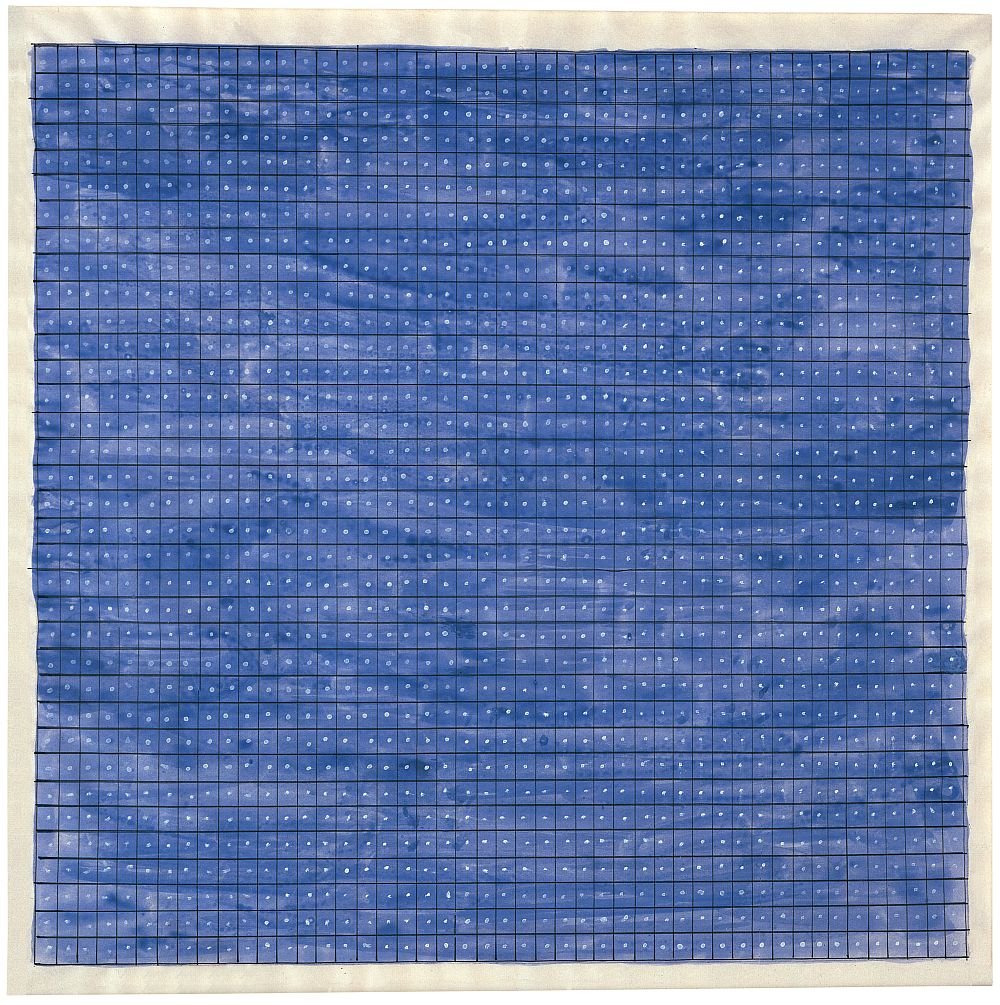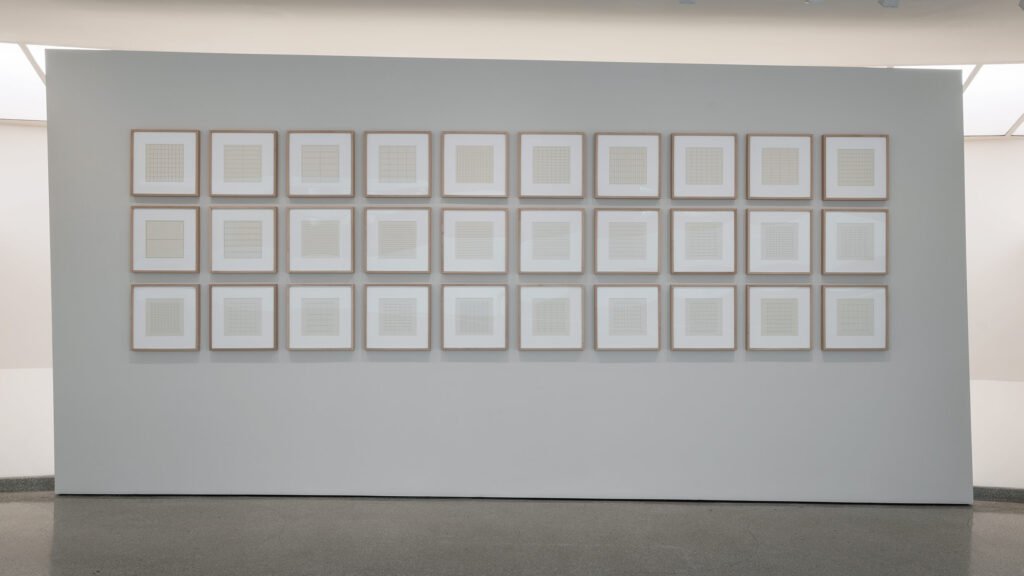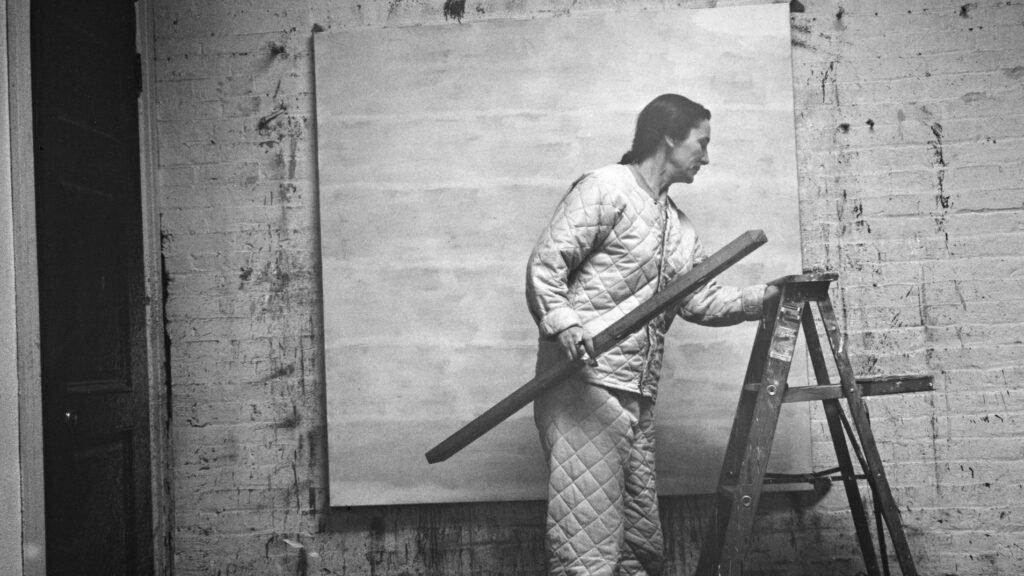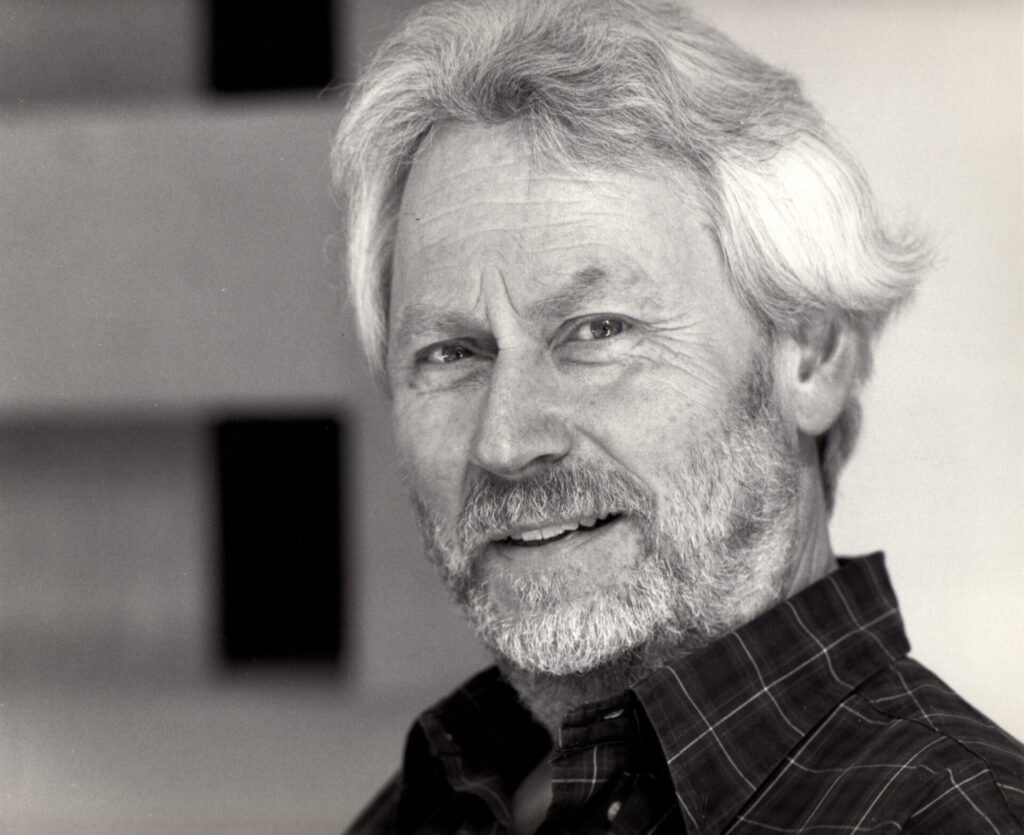At first glance, a painting by Agnes Martin might appear to be a minimalist work. Straight lines, repetition, a restrained palette, flat surfaces. However, the artist herself rejected any association with Minimalism.
For her, her works did not seek rational order nor structural coldness. They were, above all, subtle expressions of silence, peace, and transcendence.
This distinction is essential to understanding the depth of her work. Although Martin emerged in the same period as Donald Judd and Frank Stella, her commitment was to interiority. Her art, despite its austere appearance, was born from a spiritual quest.
Thus, she redefined the idea of simplicity, showing that reduced forms could contain intense and contemplative emotional states.
Agnes Martin: Silence, Spirituality, and the Refusal of Rationality
Agnes Martin believed that art should evoke pure states of mind: joy, beauty, innocence. Born in Canada in 1912 and later based in the United States, she spent much of her life in isolated environments. Her search for silence was not just a practical matter but part of the artistic process
In her words, “Art is the concrete representation of our most subtle spiritual perception.” This quote clearly points to a distancing from minimalist ideals, which focused on objectivity and structure.
While artists like Judd and Flavin built works based on repetitive modules and industrial materials, Martin produced delicate surfaces with pencil and paint on canvas. Her lines were not machine-made but hand-drawn. Each painting resulted from a meditative, almost ritualistic process.
According to the study Agnes Martin and the Grid by the University of California, Berkeley, even the meticulous grids she drew were far from seeking geometric perfection. They contain flaws, variations, and imperfections that reveal the human gesture.
This humanized approach to reduced form was deeply influenced by Eastern philosophy and Christian mysticism. The artist read Lao-Tzu, studied Taoism, and often mentioned the importance of “emptying the mind” to reach the state necessary for creation. Her book Writings (1992) gathers texts revealing this inner thought, where art is inseparable from ethics and serenity.
Her rejection of Minimalism also lay in her denial of art as a system. Martin did not concern herself with criticism or the formal evolution of her works. On the contrary, she said all her paintings were the same—not in technique, but in intention.
The Sensitivity of Repetition: Between the Visible and the Invisible
In her works, Agnes Martin reduced painting to the minimum necessary. She almost always used the same square formats, white surfaces, pastel tones, and horizontal or vertical lines.

However, these paintings are not cold or distant. On the contrary, they demand time, presence, and an almost meditative attention. Each line vibrates subtly; each color pulses in silence. The experience before one of her canvases often resembles the contemplation of a religious icon more than traditional aesthetic observation.
According to the University of Chicago study Perceptual Time and Abstract Art (2022), the key to Martin’s work lies in the notion of slowed perception. In a fast-paced visual world saturated with stimuli, her paintings offer pause. The viewer must approach, breathe, and observe slowly. It is in this suspension of time that the painting reveals its true power.
Another essential aspect of her production was voluntary isolation. In 1967, Martin left New York and retreated to the New Mexico desert, where she lived alone for years. This radical gesture was not motivated by rejection of the market or criticism but by a desire for profound silence.
There, she produced her best-known series, such as On a Clear Day (1973), composed of thirty prints that repeat minimal geometric structures with almost imperceptible variations. Each functions as a visual meditation.

Agnes Martin And a New Perspective of Abstract Art
Her contribution to abstract art was precisely to restore a sensitive dimension to it. Martin demonstrated that reducing form does not mean emptying content. On the contrary, in her painting, less is always more. Lines, colors, and rhythms become carriers of deep emotions.
Agnes Martin challenged labels, rejected Minimalism, and chose the invisible as the substance of her art. In doing so, she created a unique language where precision coexists with affection, and geometry becomes poetic. Her legacy is silent but essential.



